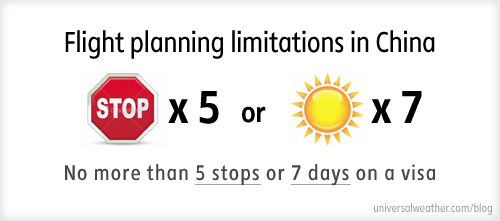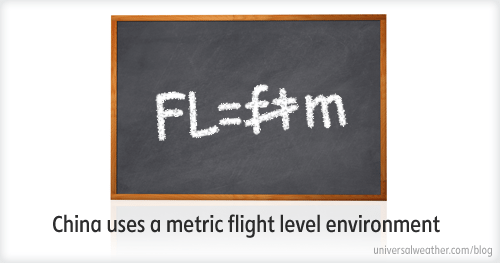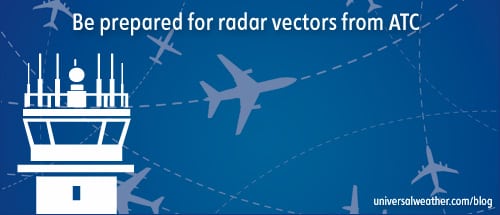9 Important Tips for Flight Planning into China


This blog post is part of a series on operating to China and continues from our last post “13 Things to Know About Overflight and Landing Permits in China“.
While China continues to evolve into a more flexible operating environment, there remain a number of flight planning limitations, restrictions and weather issues to keep in mind. We recommend you work closely with your 3rd-party provider in the pre-trip planning stage and be aware of constraints in schedule and flight plan changes when planning or making a trip to China.
1. Be aware of flight planning limitations

The Civil Aviation Administration of China (CAAC) will limit the number of stops you can make within China. The limit is typically five stops before you’re required to exit and re-enter the country. Your 3rd-party provider will help you manage that. Meanwhile, the validity of most crew visas is capped at seven days, unless they are approved for additional time. Therefore, when scheduling the trip, it’s important to plan for not only the number of stops to which the aircraft is limited, but also the seven-day limitation of crew visas (unless approved for additional time).
2. Avoid restricted airways
In planning routings and flight plan requests, bear in mind that many airways in China are dedicated to local airline operations and are not permitted for business aircraft use. Each year, airlines bid for airway and usage rights. The CAAC dedicates certain routings within China to general aviation, and this permitted list changes often. An experienced 3rd-party provider will maintain an updated list on all available and restricted airways within China and revise this list monthly. When flight planning, pre-check all permitted routes. It is also important to remember that flights to and from China cannot overfly or land in Taiwan.
3. Remember that you’ll have to board a local navigator when flying to certain domestic airfields
At remote, restricted and many domestic airfields within China, you may be required to carry a Chinese navigator. He or she will sit in the jump seat and speak Chinese to controllers on approach, as needed. Chinese navigators also carry their own charts, as published charts do not exist for many smaller airports in China. At larger airports, air traffic controllers are good and speak English.
4. Keep in mind that you will be operating in a metric environment

It’s important to familiarize yourself with China’s metric reduced vertical separation minima system, if you’re not already accustomed to it. A helpful tip is to write the metric conversions next to the U.S. measurements for altitudes. Write them in a contrasting color to draw attention. Also,, be aware of some non-standard terminology such as multiple standard terminal arrival routes (STARs) with complex routings coming with each frequency change within 100 miles. Combined with metric conversions, this may lead to errors.
5. Minimize permit changes
The CAAC does not entertain multiple permit and flight plan changes. The CAAC may deny them, which will cause delays or schedule changes. It’s best to avoid permit and flight plan changes when possible.
6. Fly assigned routing precisely
In China, you need to fly your assigned and cleared route precisely as provided on the overflight or landing permit confirmation or you can be denied entry. In some cases, the aircraft’s entry point is different at the flight information region. This can lead to a denial of entry into Chinese airspace and being forced to turn back to the point of origin.
7. Expect altitude hold-downs when departing from China to the east
When departing from China to the east, please note that there are altitude restrictions that may hold the aircraft below optimal altitudes. This applies specifically to a departure from Shanghai to the east: There is a corridor south of Korean airspace leading into Japanese airspace. It has restrictions regarding flight levels. For example, an aircraft might be held down in the low 20s or 30s when flying east toward Anchorage, Alaska (PANC). While Chinese Air Traffic Control (ATC) has been trying to limit these hold-downs, you can’t expect all the altitudes requested to be approved. Plan for jet fuel uploads and range accordingly. Also, do not expect direct routings when flying in China.
8. Anticipate radar vectoring on arrival

Be prepared for radar vectors from ATC on arrival. Generally, descent will begin at approximately 200-plus miles before touchdown. There will also be a reduction in airspeed. Prepare by adding 2,000-4,000 extra pounds of jet fuel onboard the aircraft.
9. Anticipate tropical and winter weather conditions
Considerations should be made regarding tropical weather activity (including typhoons) originating in the South China Sea. There are times when you will have to reposition your aircraft – particularly if you’re in Southern China below the latitude of Shanghai – ahead of severe storm systems. Be aware that hangar space is seldom available to transient aircraft and be prepared to reposition. Visibility can often be poor in China – particularly around Beijing – due to air pollution, sand and dust near the Gobi Dessert. Also, heavy fog and haze can become issues at Shanghai. Operators may find it valuable at times to have an enhanced vision system.
During winter ops to Northern China, plan on additional time for de-icing and carry Prist anti-icing additive onboard the aircraft (if applicable) just in case. De-icing trucks may not be reliable – even in Beijing – as they typically serve airlines first.
Questions?
If you have any questions about this article, contact me at jimmyyoung@universalaviation.aero.
Later we’ll discuss local culture considerations for China and their impact on your trip.




